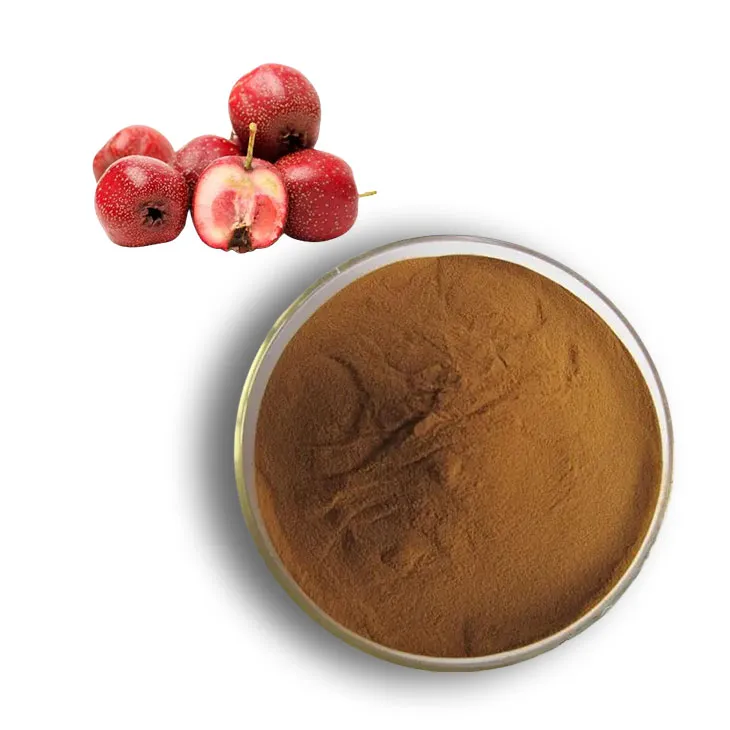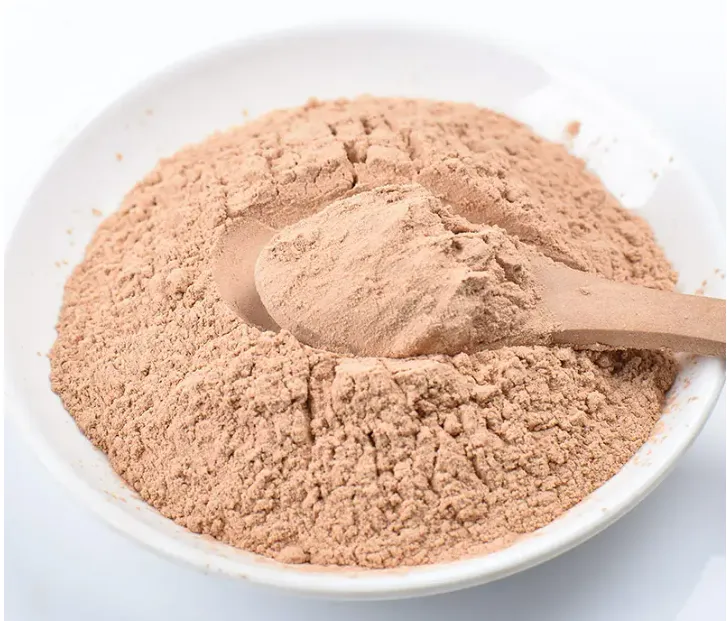- 0086-571-85302990
- sales@greenskybio.com
The process of extracting hawthorn organic acids from hawthorn extracts.
2024-11-29

1. Introduction to Hawthorn
Hawthorn, a common plant in many regions, has been widely studied and utilized. It is rich in various bioactive compounds, among which organic acids play a significant role. Hawthorn contains a considerable amount of organic acids such as citric acid, malic acid, and tartaric acid. These organic acids contribute to the unique flavor and certain health - promoting properties of hawthorn.

2. Different Extraction Techniques
2.1 Enzymatic Extraction
Advantages:
- Enzymatic extraction is a relatively mild process. It can specifically target the cell walls of hawthorn cells, breaking them down effectively without causing excessive damage to other components. For example, cellulase can hydrolyze the cellulose in the cell walls, making the intracellular organic acids more accessible for extraction.
- It often results in a higher yield of organic acids compared to some traditional extraction methods. This is because the enzymatic action can more thoroughly release the bound organic acids within the plant tissue.
- The extraction conditions are usually relatively mild in terms of temperature and pressure. This helps to preserve the integrity and activity of the organic acids, which is important for their subsequent applications.
- The cost of enzymes can be relatively high, especially for large - scale extraction operations. This may increase the overall cost of the extraction process.
- The enzymatic reaction is highly sensitive to environmental factors such as pH and temperature. Even a slight deviation from the optimal conditions can significantly affect the extraction efficiency.
- There may be some residues of the enzyme in the final extract, which may require additional purification steps to remove.
2.2 Supercritical Fluid Extraction
Advantages:
- Supercritical fluid extraction, often using carbon dioxide as the supercritical fluid, is a clean and green extraction method. Since carbon dioxide is non - toxic, non - flammable, and easily removed from the extract, it leaves no harmful residues in the final product.
- It can achieve a high extraction efficiency in a relatively short time. The supercritical fluid has excellent solubility and diffusivity properties, which enable it to quickly penetrate into the hawthorn tissue and dissolve the organic acids.
- The selectivity of supercritical fluid extraction can be adjusted by changing the pressure and temperature conditions. This allows for the separation and extraction of specific organic acids or groups of compounds from the Hawthorn Extract.
- The equipment for supercritical fluid extraction is relatively expensive, which requires a high initial investment. This may limit its application in small - scale or low - budget extraction operations.
- The operation process requires strict control of pressure and temperature conditions. Any instability in these parameters can lead to variations in the extraction results.

3. Factors Influencing Extraction Efficiency
3.1 Temperature
Temperature plays a crucial role in the extraction process. In enzymatic extraction, for example, different enzymes have their optimal temperature ranges. If the temperature is too low, the enzyme activity will be reduced, leading to a slower breakdown of the cell walls and a lower release of organic acids. On the other hand, if the temperature is too high, the enzyme may be denatured, losing its catalytic activity. In supercritical fluid extraction, temperature affects the density and solubility of the supercritical fluid. An appropriate increase in temperature can enhance the solubility of organic acids in the supercritical fluid, but excessive temperature may also cause the degradation of some organic acids.
3.2 Time
The extraction time is another important factor. In enzymatic extraction, a longer extraction time may initially lead to an increase in the yield of organic acids as more cell walls are broken down and more organic acids are released. However, after a certain point, the yield may not increase significantly or may even decrease due to possible enzyme inactivation or secondary reactions. In supercritical fluid extraction, an appropriate extraction time is necessary to ensure sufficient extraction of organic acids without wasting energy and resources. If the extraction time is too short, the extraction may be incomplete, while if it is too long, it may not bring additional benefits but increase the cost.
3.3 Solvent Type
In enzymatic extraction:
- The choice of solvent is important for maintaining the activity of the enzyme. A suitable solvent should provide an appropriate pH environment and not interfere with the enzyme - substrate interaction. For example, a buffer solution may be used to ensure a stable pH for the enzymatic reaction.
- As mentioned before, carbon dioxide is a commonly used supercritical fluid. However, in some cases, co - solvents may be added to improve the solubility of certain organic acids. The choice of co - solvent needs to be carefully considered to ensure its compatibility with the extraction process and the final product quality.

4. Potential Applications of Extracted Hawthorn Organic Acids
4.1 In the Food Industry
The extracted hawthorn organic acids can be used as natural acidulants in the food industry. For example, citric acid can enhance the flavor of food products, providing a sour and refreshing taste. They can also act as preservatives, inhibiting the growth of microorganisms in food due to their acidic properties. In addition, they can be used in the production of fruit - flavored beverages, jams, and candies, contributing to the characteristic taste and stability of these products.
4.2 In the Pharmaceutical Industry
Some hawthorn organic acids have potential health - promoting effects. For instance, they may have antioxidant properties, which can help to reduce oxidative stress in the body. In the pharmaceutical industry, they may be used as raw materials for the development of drugs or dietary supplements. They may also be studied for their potential in treating certain diseases such as cardiovascular diseases, as hawthorn has been traditionally associated with heart - health benefits.
4.3 In the Cosmetic Industry
The antioxidant and acidic properties of hawthorn organic acids make them suitable for use in the cosmetic industry. They can be added to skin care products such as creams and lotions. Their antioxidant properties can help to protect the skin from free radical damage, while their acidic nature can adjust the pH of the skin products and may also have exfoliating effects on the skin, promoting skin renewal.
FAQ:
What are the main organic acids in hawthorn?
Hawthorn contains several main organic acids, such as citric acid, malic acid, and tartaric acid. These organic acids contribute to the sour taste of hawthorn and also have various potential health benefits.
What are the advantages of enzymatic extraction for hawthorn organic acids?
Enzymatic extraction has several advantages. It can be relatively mild, which helps to preserve the structure and activity of the organic acids. It can also increase the extraction yield by breaking down cell walls and making the organic acids more accessible. Moreover, it may require less energy compared to some other extraction methods.
What are the limitations of supercritical fluid extraction for hawthorn organic acids?
The limitations of supercritical fluid extraction include high equipment cost. The process also requires precise control of parameters such as pressure and temperature. Additionally, the extraction may not be suitable for all types of Hawthorn Extracts or may have lower selectivity for certain organic acids compared to other methods.
How does temperature affect the extraction efficiency of hawthorn organic acids?
Temperature can have a significant impact. Higher temperatures generally increase the solubility of the organic acids, which may lead to higher extraction efficiency. However, if the temperature is too high, it may cause degradation of the organic acids or other components in the Hawthorn Extract. So, an optimal temperature range needs to be determined for each extraction method.
What are the potential applications of the extracted hawthorn organic acids?
The extracted hawthorn organic acids have potential applications in the food industry, for example, as natural acidulants or preservatives. In the pharmaceutical field, they may have antioxidant, anti - inflammatory, or other health - promoting properties. They can also be used in the cosmetic industry for their potential skin - beneficial effects.
Related literature
- Extraction and Characterization of Organic Acids from Hawthorn: A Review"
- "Optimization of Hawthorn Organic Acid Extraction: Techniques and Considerations"
- "The Role of Hawthorn Organic Acids in Health and Their Efficient Extraction"
- ▶ Hesperidin
- ▶ Citrus Bioflavonoids
- ▶ Plant Extract
- ▶ lycopene
- ▶ Diosmin
- ▶ Grape seed extract
- ▶ Sea buckthorn Juice Powder
- ▶ Fruit Juice Powder
- ▶ Hops Extract
- ▶ Artichoke Extract
- ▶ Mushroom extract
- ▶ Astaxanthin
- ▶ Green Tea Extract
- ▶ Curcumin
- ▶ Horse Chestnut Extract
- ▶ Other Product
- ▶ Boswellia Serrata Extract
- ▶ Resveratrol
- ▶ Marigold Extract
- ▶ Grape Leaf Extract
- ▶ New Product
- ▶ Aminolevulinic acid
- ▶ Cranberry Extract
- ▶ Red Yeast Rice
- ▶ Red Wine Extract
-
Cassia Seed Extract
2024-11-29
-
Saffron Extract Powder
2024-11-29
-
Black Rice Extract
2024-11-29
-
Dan Shen Root Extract/Salvia Root Extract
2024-11-29
-
Almond Extract Powder
2024-11-29
-
Ivy Extract
2024-11-29
-
Aguaje Extract
2024-11-29
-
Red Date Extract
2024-11-29
-
Astaxanthin
2024-11-29
-
Oyster Mushroom Extract Powder
2024-11-29





















